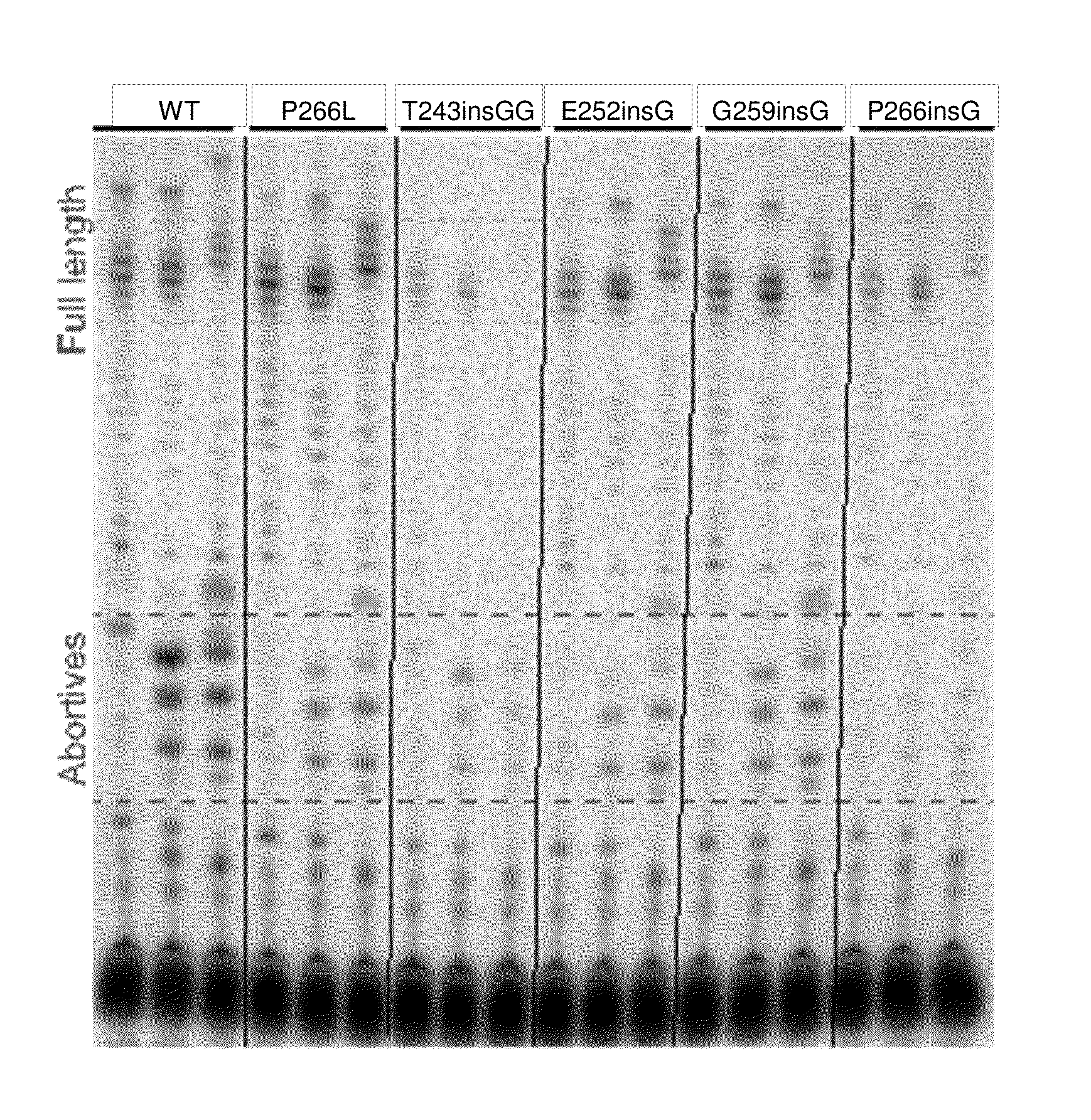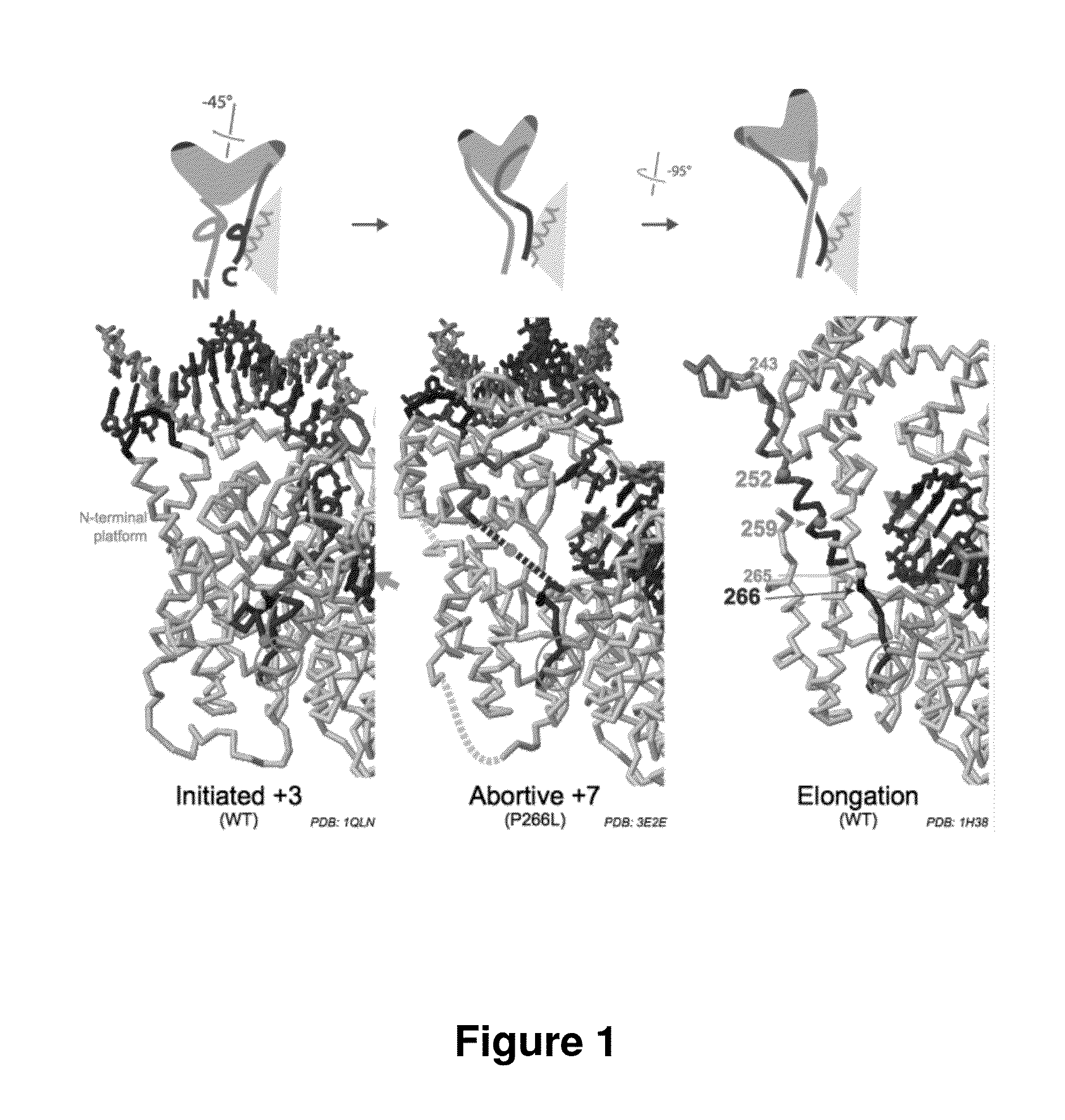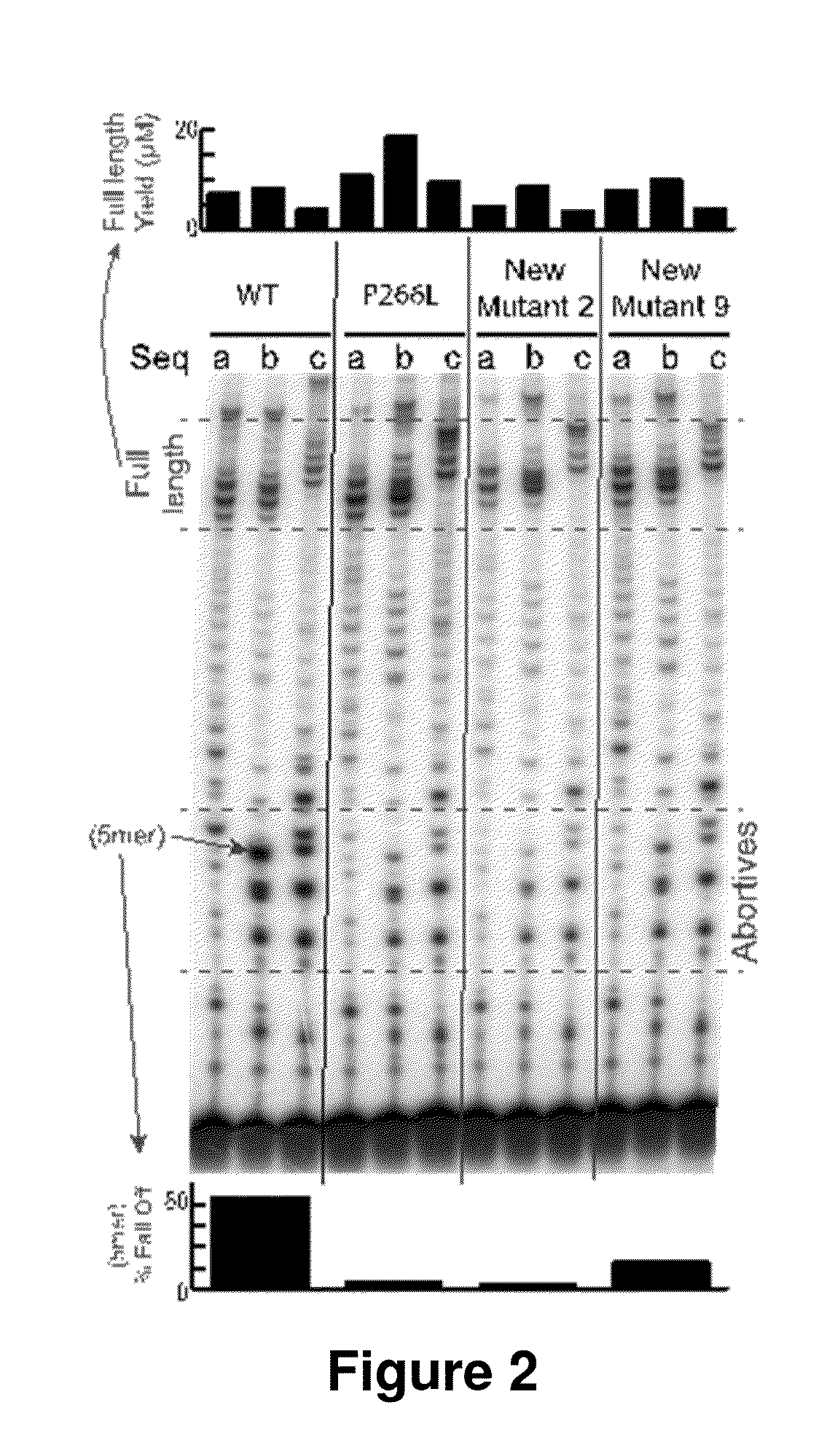Modified T7-related RNA polymerases and methods of use thereof
a technology of rna polymerases and t7-related rna, which is applied in the field of rna polymerases, can solve the problems of low yield and often limit the use of techniques, and achieve the effect of less release of abortive rna fragments
- Summary
- Abstract
- Description
- Claims
- Application Information
AI Technical Summary
Benefits of technology
Problems solved by technology
Method used
Image
Examples
example 1
Mechanism-Based Protein Redesign—Modified T7-Related RNA Polymerases with Reduced Abortive Cycling
[0058]Without wishing to be bound by theory, Applicants have developed a model for instability in initially transcribing complexes of T7-related RNA polymerases. During initial transcription (the abortive phase), growth of the RNA-DNA hybrid from 3 base pairs to at least 8 base pairs drives a rotation of an N-terminal platform protein domain. During this rotation, the N-terminal platform maintains contact with the double stranded promoter DNA. Applicants believe that this rotation ultimately (beyond 8 bases) leads to disruption of a substructure within the N-terminal platform and a disruption of DNA binding contacts. Loss of promoter contacts (once the hybrid is sufficiently long) are believed to be necessary to effect the transition to stable elongation, and a sequence-nonspecific elongation complex.
[0059]In developing this model, Applicants examined a structural model for mutant T7-re...
example 2
T7-Related RNA Polymerase Phylogenetic Relationships
[0070]Applicants prepared an RNA polymerase protein sequence-derived phylogenetic tree shown in FIG. 4, which demonstrates that T7 RNA polymerase is closely related to the T3 and K11 RNA polymerases, as well as SP6 RNA polymerase and various mitochondrial and chloroplast RNA polymerases. Changes to the C-terminal linker are expected to have similar effects in the related viral RNA polymerases, e.g., T3, K11, SP6 RNA polymerases. Although single subunit RNA polymerases are less structurally related to certain multi-subunit bacterial and eukaryotic RNA polymerases, hybrid growth in these systems also is expected to produced a structural rearrangement in the protein that leads to promoter release.
[0071]FIG. 5 depicts a sequence alignment of T7-related RNA Polymerases around the region of the C-linker (upper) and in the O helix (lower). Lack of strict conservation supports the “linkage” role for this region and that a variety of differ...
example 3
Analysis of Human Mitochondrial RNA Polymerase (hmtRP)
[0074]A comparison of the structure of human mitochondrial RNA polymerase with structures of T7 RNA polymerase at positions +3 and +7 was performed. The large C-terminal domain (grey domain to the right in each) aligned very well in all three cases, while the human mt RNA polymerase in the absence of DNA shows the N-terminal rotation characteristic of the T7 structure stepped out to approximately position +7. Note that the human mt RNA polymerase utilizes a secondary subunit for initiation, but not elongation. It also has an N-terminal addition (thin gray trace). FIG. 8 depicts the DNA-free structure of hmtRP. Color coding in FIG. 8 is the same as that used above for T7 RNA polymerase and is based on the sequence alignment presented in FIG. 5.
[0075]The crystal structure of the two-subunit RNA polymerase (hmtRP) from human mitochondria supports the structural understanding of the T7 family phage RNA polymerases. While this protein...
PUM
| Property | Measurement | Unit |
|---|---|---|
| molar ratio | aaaaa | aaaaa |
| time | aaaaa | aaaaa |
| structure/function | aaaaa | aaaaa |
Abstract
Description
Claims
Application Information
 Login to View More
Login to View More - R&D
- Intellectual Property
- Life Sciences
- Materials
- Tech Scout
- Unparalleled Data Quality
- Higher Quality Content
- 60% Fewer Hallucinations
Browse by: Latest US Patents, China's latest patents, Technical Efficacy Thesaurus, Application Domain, Technology Topic, Popular Technical Reports.
© 2025 PatSnap. All rights reserved.Legal|Privacy policy|Modern Slavery Act Transparency Statement|Sitemap|About US| Contact US: help@patsnap.com



